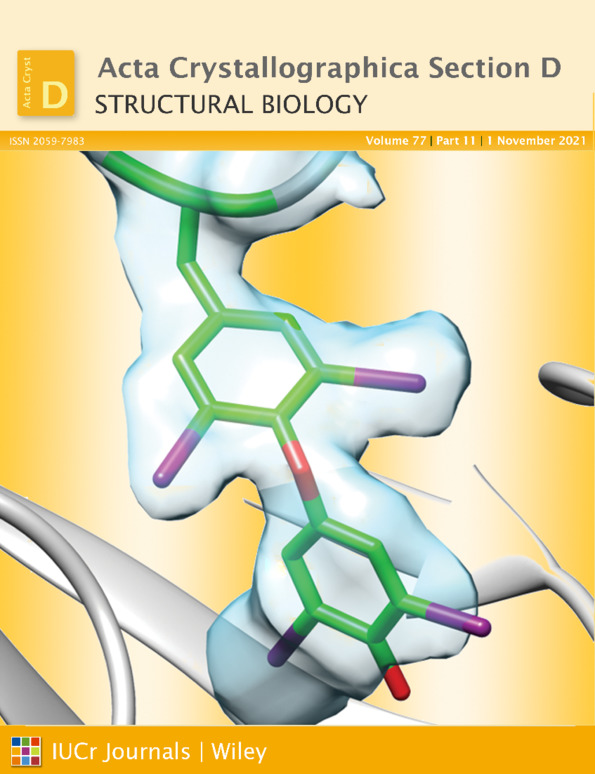Ambiguities in and completeness of SAS data analysis of membrane proteins: the case of the sensory rhodopsin II–transducer complex
Abstract
Membrane proteins (MPs) play vital roles in the function of cells and are also major drug targets. Structural information on proteins is vital for understanding their mechanism of function and is critical for the development of drugs. However, obtaining high-resolution structures of membrane proteins, in particular, under native conditions is still a great challenge. In such cases, the low-resolution methods small-angle X-ray and neutron scattering (SAXS and SANS) might provide valuable structural information. However, in some cases small-angle scattering (SAS) provides ambiguous ab initio structural information if complementary measurements are not performed and/or a priori information on the protein is not taken into account. Understanding the nature of the limitations may help to overcome these problems. One of the main problems of SAS data analysis of solubilized membrane proteins is the contribution of the detergent belt surrounding the MP. Here, a comprehensive analysis of how the detergent belt contributes to the SAS data of a membrane-protein complex of sensory rhodopsin II with its cognate transducer from Natronomonas pharaonis (NpSRII–NpHtrII) was performed. The influence of the polydispersity of NpSRII–NpHtrII oligomerization is the second problem that is addressed here. It is shown that inhomogeneity in the scattering length density of the detergent belt surrounding a membrane part of the complex and oligomerization polydispersity significantly impacts on SAXS and SANS profiles, and therefore on 3D ab initio structures. It is described how both problems can be taken into account to improve the quality of SAS data treatment. Since SAS data for MPs are usually obtained from solubilized proteins, and their detergent belt and, to a certain extent, oligomerization polydispersity are sufficiently common phenomena, the approaches proposed in this work might be used in SAS studies of different MPs.




